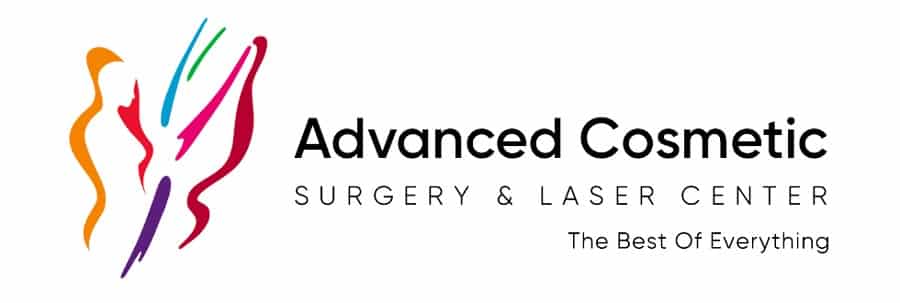Lower Eyelid Blepharoplasty Q&A with Dr. Jon Mendelsohn
Below are answers to the most frequently asked questions about lower blepharoplasty—written in Dr. Mendelsohn’s own voice after nearly three decades of experience helping patients look naturally refreshed.
Set 1: Curious Beginner
What is lower blepharoplasty and why do people consider it?
Lower blepharoplasty is a surgical procedure that addresses puffiness, bags, and loose skin under the eyes. These concerns often arise due to aging, genetics, or lifestyle. My approach is to refresh your appearance—not change how you look. I may also recommend laser resurfacing or injectable fillers for sunken areas or skin discoloration. It’s a personalized treatment plan designed to help you look more like yourself—just more rested.
How do I know if I’m a good candidate for this surgery?
If you’re bothered by puffiness, under-eye bags, or loose skin beneath the eyes and are in good general health with realistic expectations, you may be a great candidate. I evaluate your anatomy, skin condition, and goals during your consultation to determine the best approach.
What kind of results can I expect? Will I look dramatically different?
Most of my patients tell me, “I still look like me—just more rested.” That’s exactly what I aim for. Surgery addresses the bags and extra skin; DOT laser resurfacing can enhance skin tone and brightness. The results are subtle, natural, and long-lasting.
Is the procedure painful? What is recovery like?
Pain is typically minimal. You may experience tightness or mild soreness, but most patients manage with Tylenol. Swelling and bruising are usually minimal, and most patients return to social activity in 3–5 days.
How long does the procedure take, and do I need to stay overnight?
The procedure takes 30–40 minutes, performed under local anesthesia with light sedation in our fully accredited surgery suite. You’ll go home the same day—but we ask that you have someone else drive you if sedation is used.
What’s the difference between lower and upper blepharoplasty?
Lower blepharoplasty addresses puffiness and loose skin under the eyes. Upper blepharoplasty treats excess skin in the upper eyelids. Many patients choose to combine both for a more balanced result.
Are there non-surgical options I should consider first?
Yes. Fillers can camouflage hollows or tear troughs, and laser resurfacing improves texture and pigmentation. While not permanent, these treatments are long-lasting and may be appropriate depending on your goals and anatomy.
What are the most common concerns people have before getting this procedure?
People often worry about looking unnatural or having regrets. My role is to walk you through what’s possible, what to expect, and how we ensure the outcome matches your expectations. My goal is to help you feel fully informed and supported every step of the way.
More Questions Coming Soon…
This section will soon include Sets 2 and 3 with in-depth, advanced questions for patients exploring lower blepharoplasty more seriously or preparing for surgery.
Lower Eyelid Blepharoplasty Q&A with Dr. Jon Mendelsohn
Below are answers to the most frequently asked questions about lower blepharoplasty—written in Dr. Mendelsohn’s own voice after nearly three decades of experience helping patients look naturally refreshed.
Set 1: Curious Beginner
Set 2: Cautious Explorer
I’ve read about fat repositioning vs. removal—how do you decide which approach to take?
I evaluate each patient’s anatomy to decide between removing or repositioning fat. While repositioning can create youthful contours, it sometimes leads to extended swelling. I often remove excess fat above the tear trough and treat hollowness with fillers or fractional CO₂ laser later. My focus is balance and precision—not aggressive removal.
I’m concerned about looking “overdone.” How do you ensure natural results?
I approach surgery with conservative precision, respecting facial harmony and individual anatomy. Rather than removing as much fat as possible (as we used to), I make subtle changes and often incorporate laser resurfacing or fillers. This avoids the cadaveric look and gives a refreshed, rested appearance.
How long do the results typically last, and will I need a touch-up later?
Results often last 10–15 years, sometimes even longer. Fat does not return, but aging continues, so maintenance treatments may eventually be needed. Most patients enjoy dramatic and durable improvement.
What are the risks or complications I should realistically be aware of?
Risks include bruising, swelling, irritation, asymmetry, infection, or bleeding—but these are rare in my practice. Planning, precision, and post-op care are key to safe outcomes.
I have darker skin—how does pigmentation affect healing or scarring?
I adjust techniques for darker skin tones and often use a transconjunctival approach to avoid external scars. While laser use may be limited due to pigmentation risks, darker skin types often don’t require it. Post-op care includes sun protection and topical therapies.
Can lower blepharoplasty correct puffiness and dark circles, or will I need additional procedures?
The surgery corrects fat pad puffiness and often softens shadows. If pigmentation causes dark circles, we may use complementary treatments like peels, lasers, or skincare products to improve tone.
I’ve heard laser treatments are an alternative—how do they compare?
Laser treatments improve texture and fine lines but don’t remove or reposition fat. I often combine DOT laser resurfacing with surgery for best results.
How do you handle cases where people aren’t satisfied with their results from other surgeons?
I provide compassionate evaluations and use advanced revision techniques to restore symmetry or volume. Honest communication and realistic planning are key to successful revisions and rebuilding confidence.
Set 3: Informed Decision-Maker
What is your specific surgical technique for transconjunctival vs. transcutaneous approaches?
I prefer transconjunctival incisions to avoid visible scars. If skin tightening is needed, I use fractional CO₂ laser or a conservative pinch excision, not a full transcutaneous cut. This minimizes risk and preserves lid shape.
How do you handle preservation of the orbital septum to avoid hollowing or a “pulled down” look?
I avoid over-removal of fat and use fillers when volume restoration is needed. I don’t recommend fat transfer in this area due to poor placement risks. I also use canthal support when needed to avoid eyelid retraction.
Can I see before-and-after photos of patients in my age and ethnic group?
Yes. During consultation, I’ll show you photos tailored to your demographics and anatomy so you can set realistic expectations and feel confident about what’s possible.
Do you use fat grafting or fillers in conjunction with surgery to improve tear trough appearance?
I use fillers after swelling subsides to refine tear troughs and midface contours. This helps achieve a natural transition from eyelid to cheek. I avoid fat grafting in this area due to placement concerns.
What is your complication rate for this procedure, and how are issues like ectropion handled?
My complication rate is extremely low. I minimize ectropion risk with conservative excision, transconjunctival access, and canthal support if needed. My approach has evolved to avoid the risks associated with older transcutaneous techniques.
What protocols do you use pre- and post-op to minimize bruising and recovery time?
We avoid blood thinners, recommend arnica or bromelain, and apply cold compresses. Elevation and medical-grade skincare help. DOT laser adds visible downtime but greatly improves skin quality. I’ve had it myself and guide patients through every step.
How many lower blepharoplasty procedures have you performed in the last year, and what makes your approach unique?
I’ve performed over 100 this year and thousands across my career. My approach is precise, personalized, and designed to preserve natural anatomy while delivering visible improvement.
Can you walk me through a typical consultation—what should I prepare, expect, and ask?
We’ll discuss your concerns, evaluate your anatomy, and review photo examples. I’ll offer surgical and non-surgical options and help you understand what’s realistically achievable—without pressure.


Recent Comments